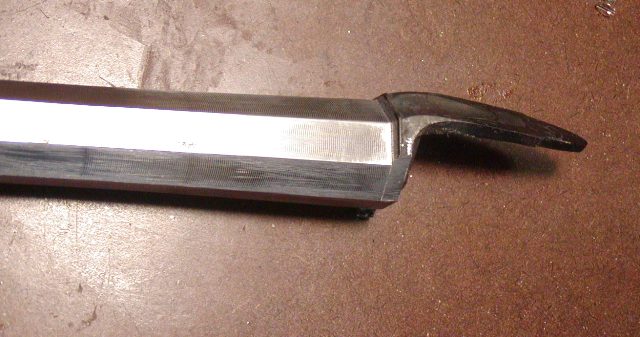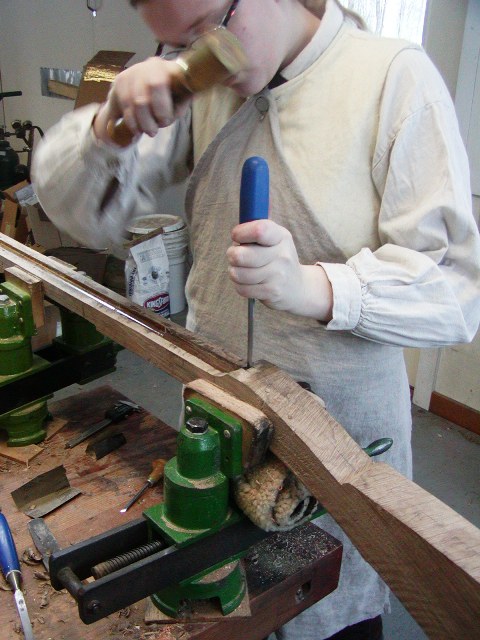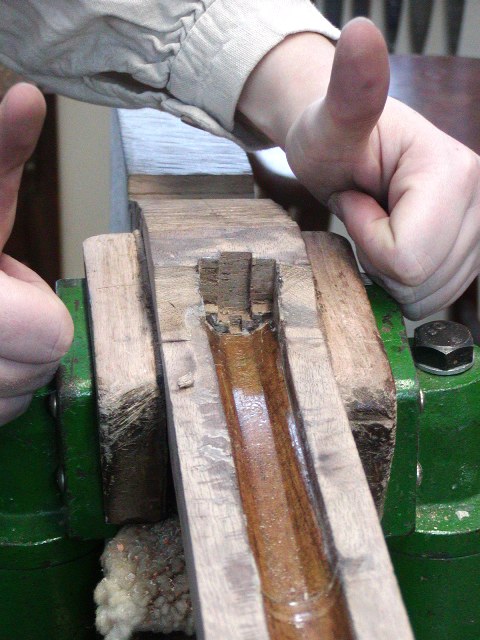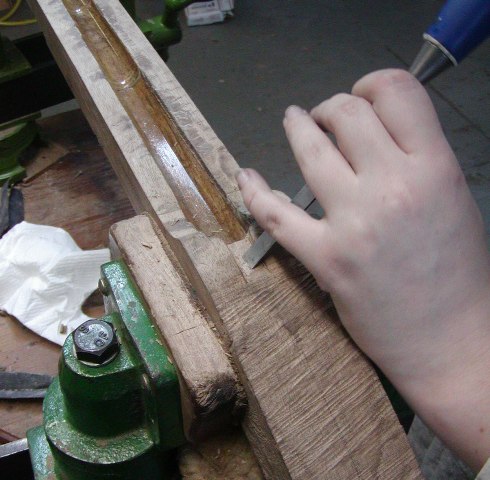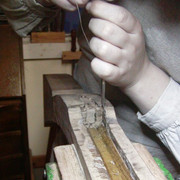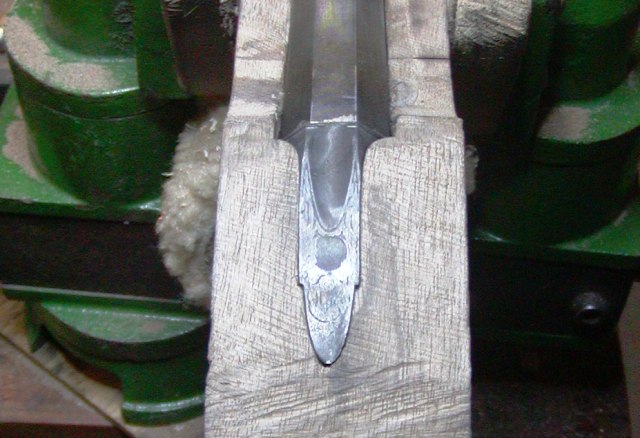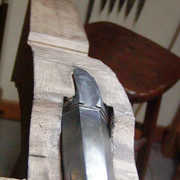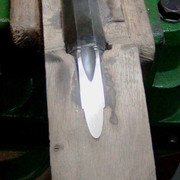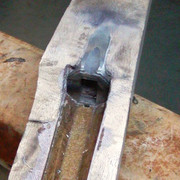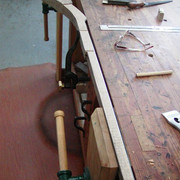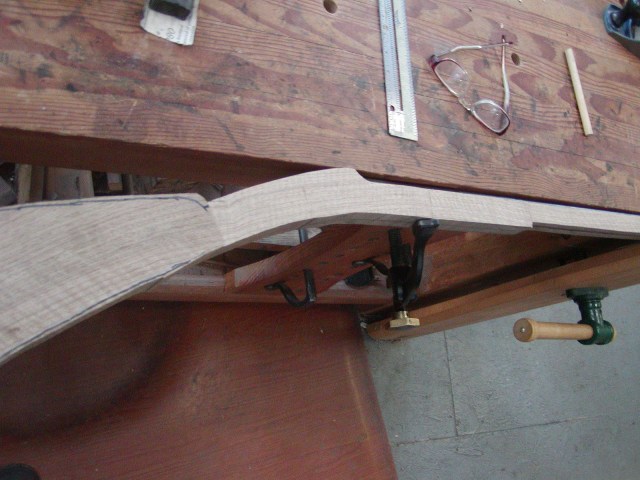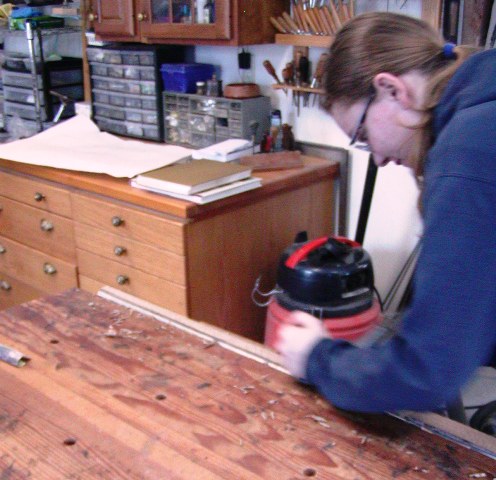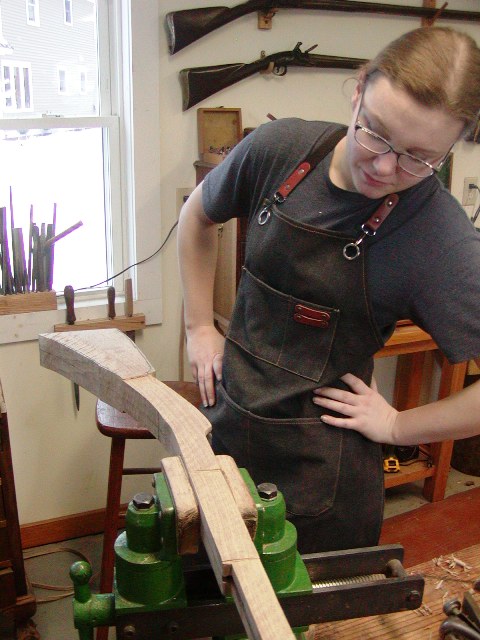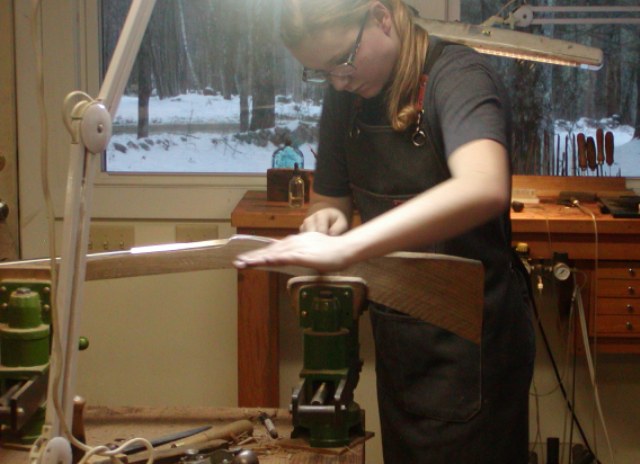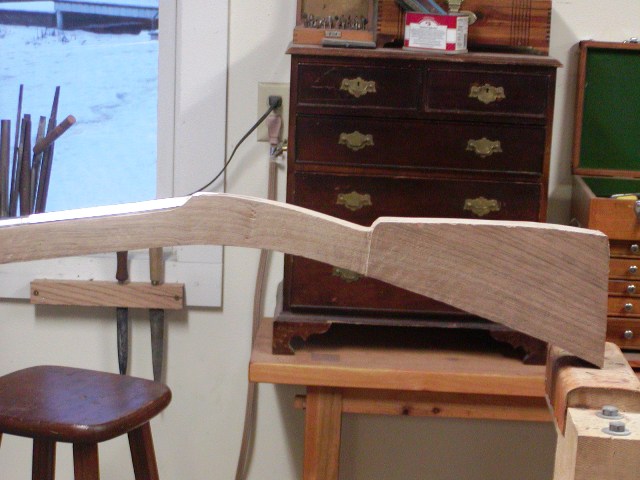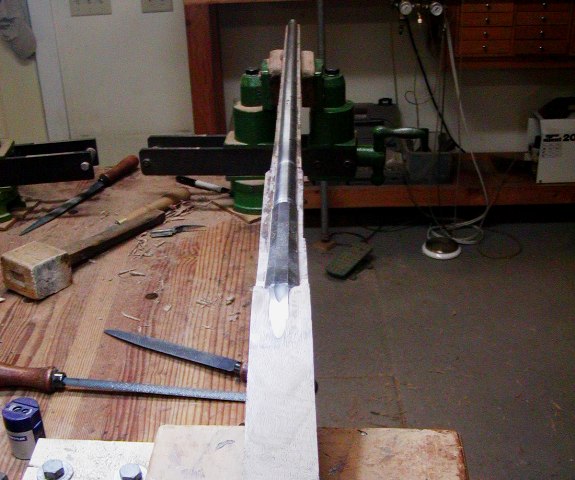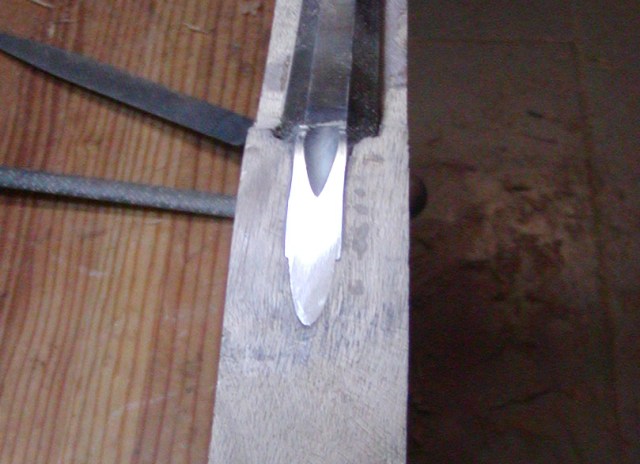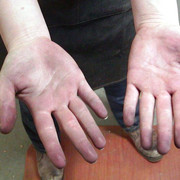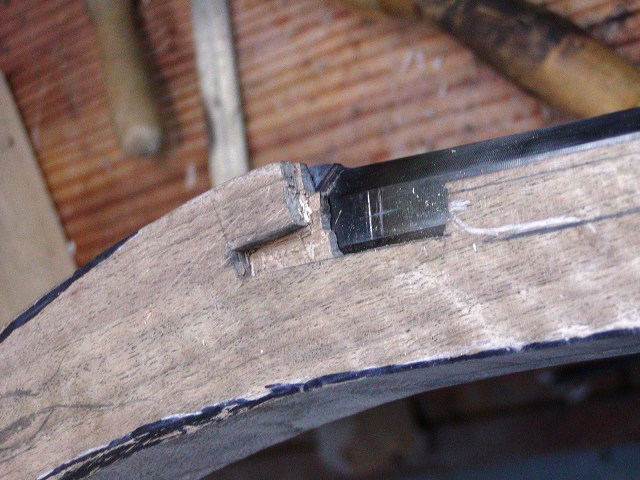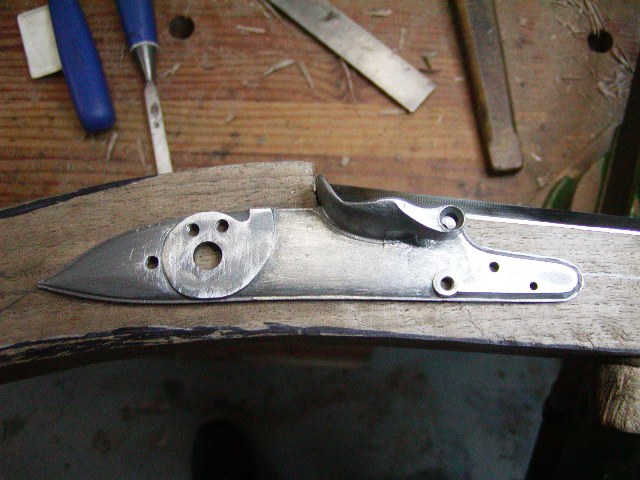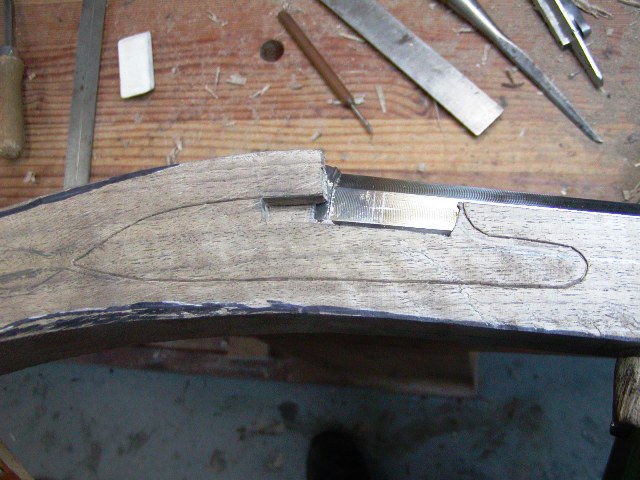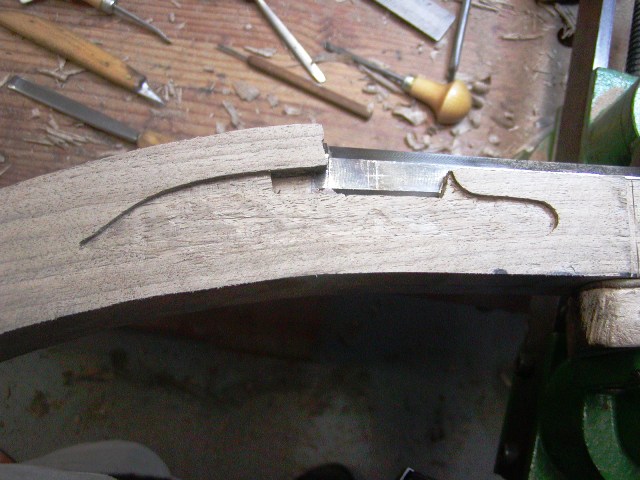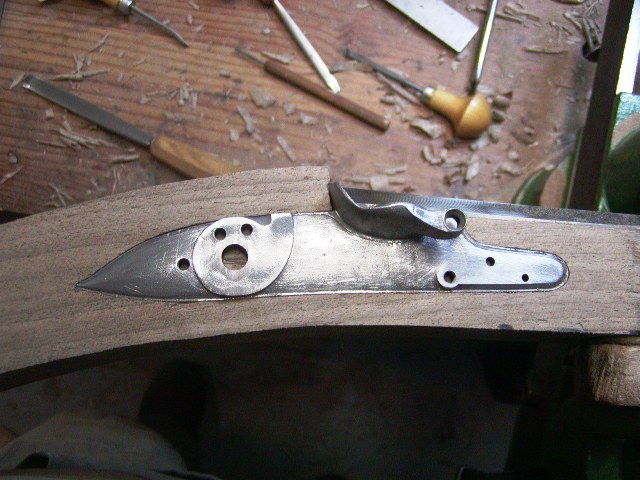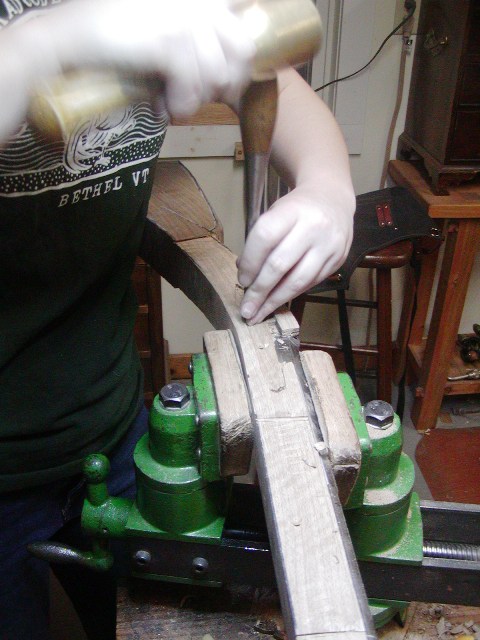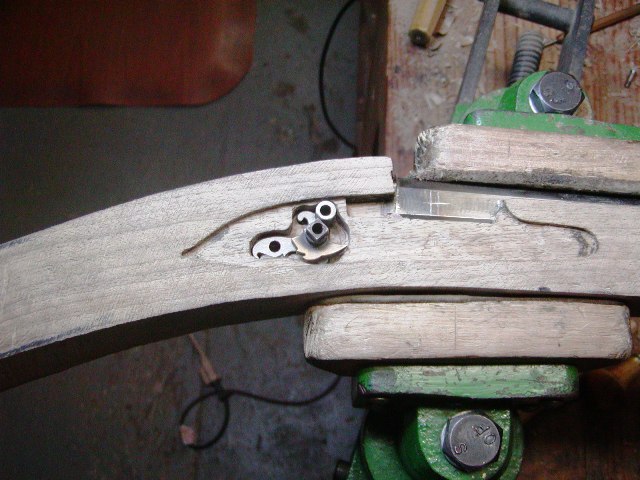Hi folks,
Maria and I thank you all for your encouragement. This project is going well. Today's lesson was fitting a standing or "break off" breech, which many of you call "hook breech and tang". For those of you intending to build English fowlers this post contains a lot of information you will not find anywhere else other than my tutorials on English fowlers posted on the ALR site.
Rice provided a standing breech that was beautifully machined but the tang was way too short. It is perfect for a pistol but not a long gun. Maria will save the finely made breech for her eventual pistol. I have cast standing breeches from TRS and a standard breech plug with tang that fit her barrel. So our first job was to fit the new breech plug. This is a basic skill to learn and our new plug needed to turn 180 degrees further to seal against the shoulder in the barrel and line up with the top and bottom flats on the barrel. So Maria had to file the bolster of the plug and face to make the fit. We used Magic Marker on the face to test for fit to the shoulder.
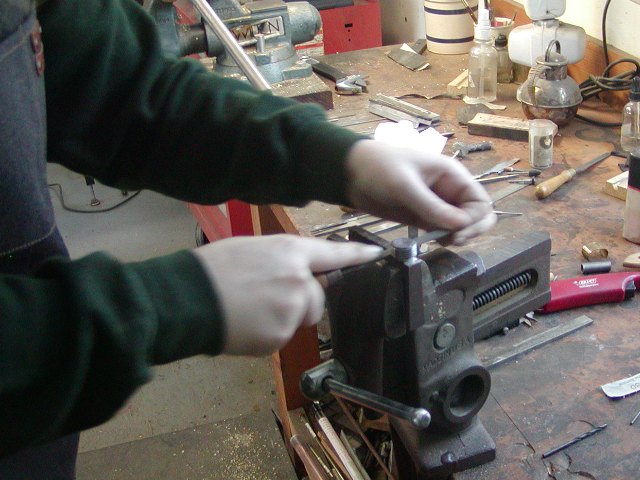
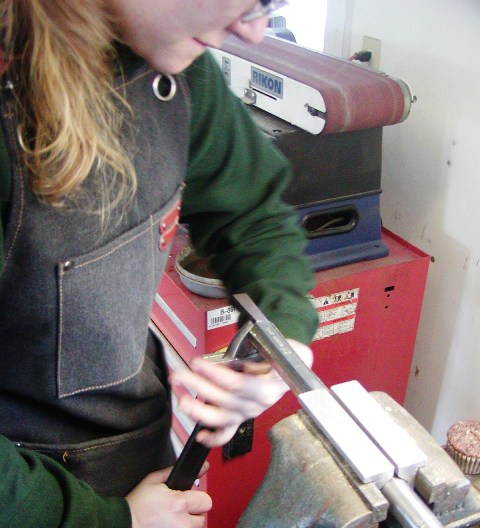
Next, we cut off the tang and shape the bolster into the proper hook. On original 18th century English guns, the hook is tapered such that it is a little narrower at the top than the bottom. So is the slot in the standing breech. That is so the hook snugs tighter into the breech as it is fully engaged. No modern commercial makers of these breeches do this.
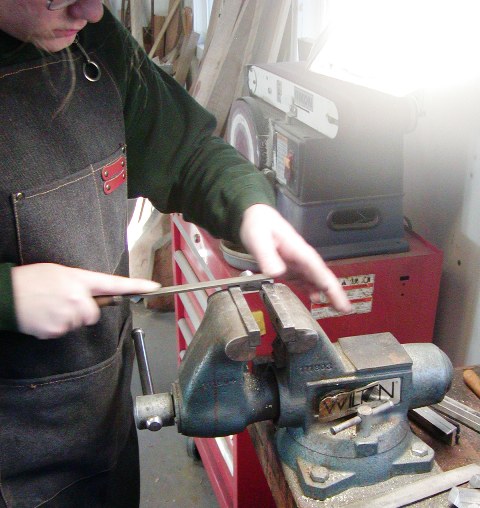
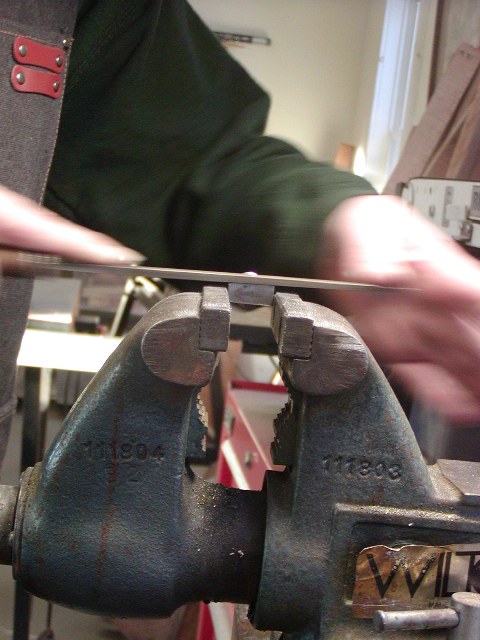
After filing the sides of the hook so they fit the slot in the standing breech, we cleaned up the cast standing breech, made sure the face was filed true and flat and the slot clean and crisp. Then we started to shape the hook, working both top and bottom until it began to slide in place. When close, we installed the plug in the barrel and continued filing until the hook smoothly slid into place. The result was a nice firm fit.
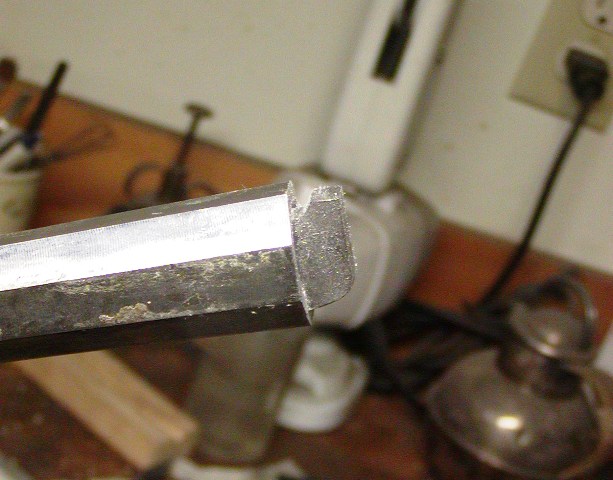
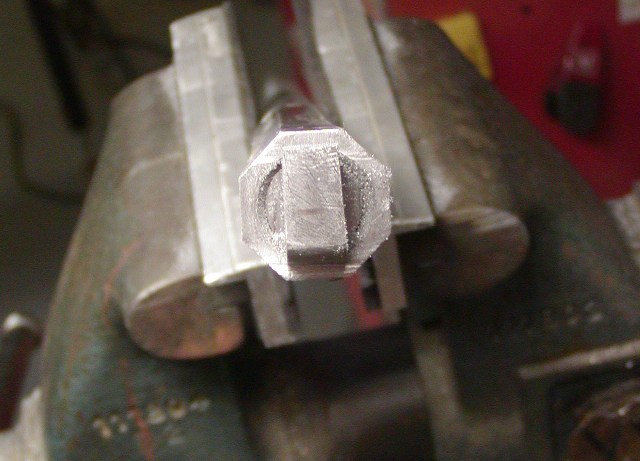
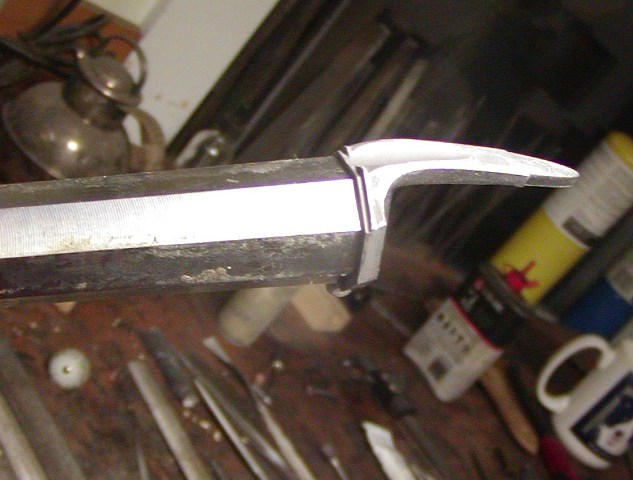
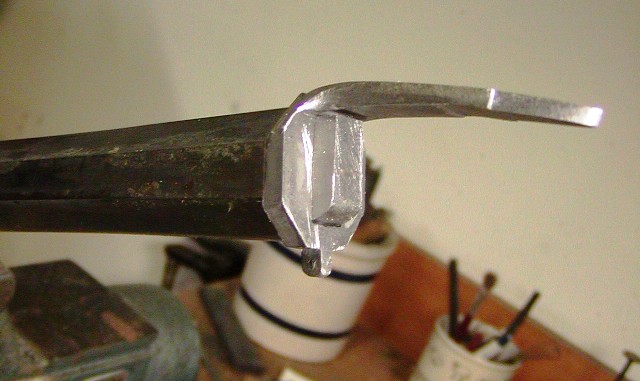
The standing breech is oversize and will be filed down flush with the barrel flats, except the top 3 flats. Those will have a step above the barrel as were the originals. The standing breech has a hump and is exactly correct for the time period this gun is supposed to represent. Moreover, you can see the lug on the bottom of the standing breech. That is for a cross pin to anchor the bottom of the breech. Unless you buy castings from TRS or Blackley, you will never get that feature nor the hump. The commercially made stuff is very deficient and historically inaccurate.
dave














